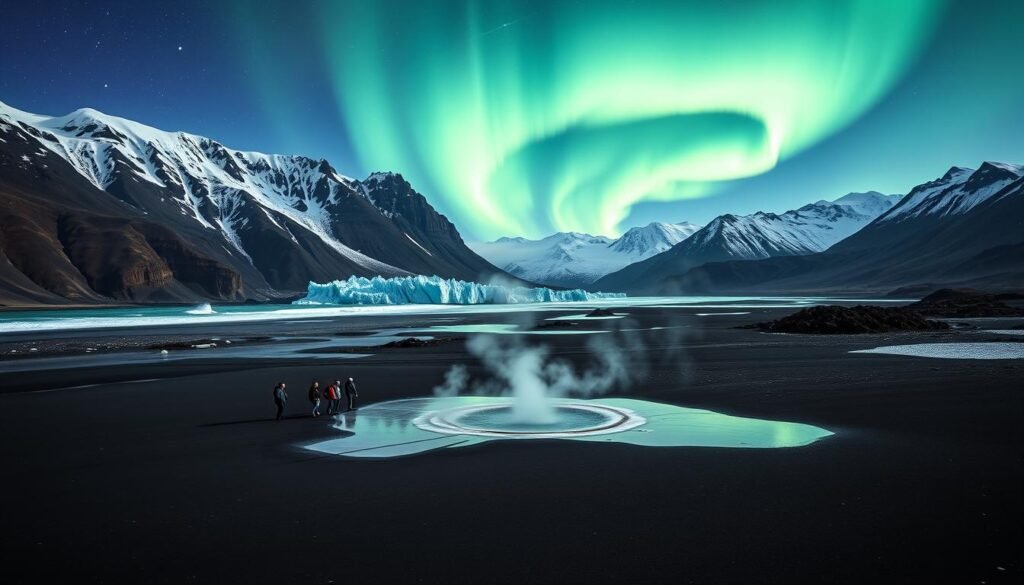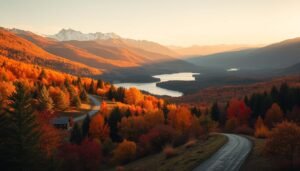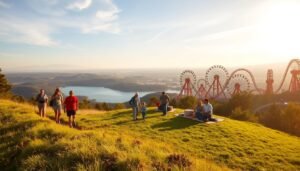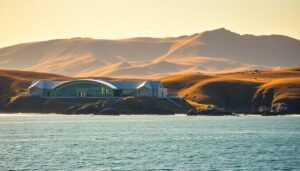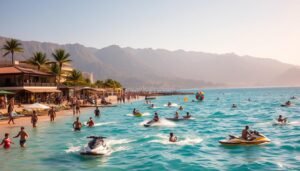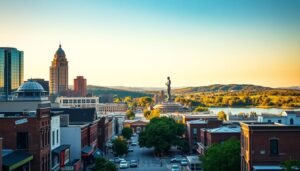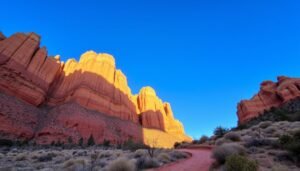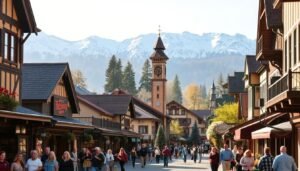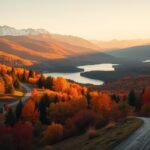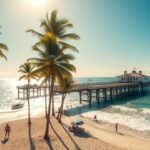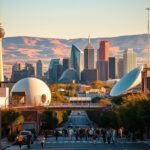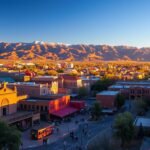Nearly 15% of this country is covered by a single glacier — Vatnajökull — and that one fact alone shows how big the natural draws are here.
I write from firsthand trips and a love for quick day tours and longer Ring Road adventures. I’ll walk you through the best things I actually do, so planning feels simple and fun.
Reykjavik makes a great base: the concert hall Harpa sits by the harbor and geysers, waterfalls, and glaciers are an easy drive away. I explain key routes like the Golden Circle and the South Coast, with realistic drive times and when each experience works best.
Whether you want a highland 4×4 summer adventure or a calm soak at the Blue Lagoon, this is a full guide for mapping your trip. I blend culture and nature so you know which city stops pair well with wild views.
Key Takeaways
- I show practical drive times and ideal day tours.
- You’ll see how Reykjavik connects museums, tours, and coastal walks.
- Major regions like Snaefellsnes and the South Coast offer distinct highlights.
- I cover seasonal notes so your plan fits the time you travel.
- This guide mixes big-ticket nature with cultural stops for a balanced trip.
Quick-hit bucket list: the top things to do in Iceland I never skip
I prefer a lean itinerary: one standout natural wonder, a cultural bite, and a restorative soak each day. This keeps travel relaxed and lets me really enjoy each stop. I pick a couple of must-see places and leave room for surprises.
See northern lights on a guided hunt
I book a guided night tour because experts chase clear skies and give the best chance for a show. Northern lights are strongest from September through April, and guided teams handle road and weather choices so I can focus on photos and the moment.
Soak in a geothermal hot spring or spa
After a full day I’ll also plan a soak. Options range from wild pools near remote roads to luxe spas like Blue Lagoon and Sky Lagoon. A hot spring dip restores energy fast and makes an active itinerary feel balanced.You can learn more about things-to-do-in-venice
Walk along black sand beaches on the South Coast
I make time for Reynisfjara near Vík and always respect the surf—sneaker waves are real. These shores pair well with a waterfall run (Skógafoss, Seljalandsfoss) so one strong natural stop and a beach stroll fit easily into most tours or a Ring Road drive.
- My simple formula: one epic view, one quick cultural stop, one warm soak.
- Use tours when they save time or add gear; self-drive when I want flexibility.
Reykjavik highlights: culture, food, and coastal views in the capital city

I love how Reykjavik serves big cultural hits inside a comfortably small urban loop. You can walk from a skyline church to waterfront art, stop for coffee, and still have time for an evening soak.
Hallgrímskirkja tower views and Rainbow Street stroll
I ride the elevator up Hallgrímskirkja for wide views over colorful rooftops and Mount Esja. Tower tickets are bought the same day, and the short line moves fast.
From the church I stroll Skólavörðustígur—Rainbow Street—where cafes and shops make good stops for souvenirs and a quick pastry.You can learn more about things-to-do-in-osaka
Harpa Concert Hall and the Sun Voyager at sunset
I time a golden-hour walk along Sæbraut to photograph the Sun Voyager and capture reflections on the harbor. Then I step into Harpa Concert Hall; the public areas are free and the glass facade glows late in the day.
I check the calendar for a harpa concert when I want an evening performance, or I simply enjoy the concert hall lobby and bay views.
Old Harbor vibes, coffee stops, and a short food walk
The Old Harbor is great for maritime views and casual seafood at places like Höfnin. Whale-watching tours leave from here if I want a quick nature outing from the town center.
I sample rye bread ice cream at Café Loki and warm cinnamon buns from Brauð & Co., then relax at a local pool such as Laugardalslaug before a late Sky Lagoon reservation.
| Attraction | Best time | Practical tip |
|---|---|---|
| Hallgrímskirkja tower | Morning or late afternoon | Buy tickets on the day; bring a light jacket |
| Harpa / Sun Voyager | Sunset | Public areas free; check events for harpa concert listings |
| Old Harbor | Midday | Boat tours depart here; book whale tours early |
| Sky Lagoon | Late afternoon | Timed-entry required; 10–15 minute drive from downtown |
Tip: Wander slowly—street art and cozy cafes are how I’ll find local flavor in this compact city.
The Golden Circle essentials: Thingvellir, Geysir, and Gullfoss in a day
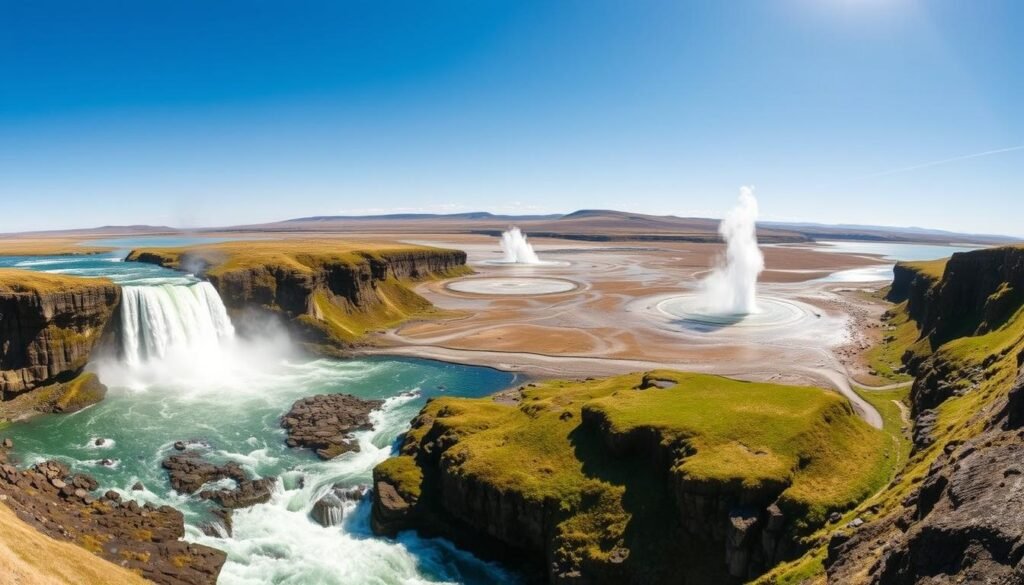
I map the Golden Circle as a compact loop that balances history, steam, and raw waterpower. This route is an ideal day trip from Reykjavik and works well whether I self-drive or join guided tours.
Thingvellir National Park: tectonic rifts and Oxarárfoss
Thingvellir sits about 45 minutes from Reykjavik and is a UNESCO site. I walk Almannagja Gorge and detour to Oxarárfoss for quiet views.
If I have time I consider snorkeling Silfra—clear fissure water offers a memorable perspective on the plates.
Watch Strokkur erupt every minutes at Geysir
At Geysir the star is Strokkur, which blasts off roughly every few minutes. Parking is free and the field is open 24/7, so early mornings or late hours can give a calmer visit.You can learn more about things-to-do-in-athens
Gullfoss viewpoints and the best way to tour
Gullfoss is a powerful waterfall with maintained paths and layered platforms. In summer I often drop down to the lower spray zone for dramatic photos.
- Plan 6–8 hours for the full ~300 km loop.
- Start early at Thingvellir, then Geysir, and leave plenty of time at Gullfoss.
- Use flexible pacing: if a spot is crowded, circle back later for better light.
- Pack layers and waterproof shoes; weather can shift within hours.
- Choose tours wisely—some add snorkeling or snowmobiling if you want more adventure.
South Coast standouts: waterfalls, glaciers, and dramatic shores

A day on the South Coast feels like a highlight reel: falls that thunder, basalt cliffs, and blue ice at the trail edge. I plan one strong stop, a coastal stroll, and an optional guided hike so the pace stays relaxed.
Skógafoss and Seljalandsfoss sit about 95 miles (150 km) from Reykjavik—just over two hours by car. Parking at Skógafoss is free and stairs lead to an upper view. Seljalandsfoss has a famous behind-the-falls path, so bring a rain layer for the mist. From the Skógar Museum car park a short trail leads to Kvernufoss, a quieter waterfall you can also walk behind.
Reynisfjara black sand beach safety and photo spots
Reynisfjara near Vík shows dramatic basalt columns and striking shorelines. I time visits for gentler light and I keep a wide berth from the surf—sneaker waves are a real hazard. For the best photos, watch for reflections on calm mornings.
Sólheimajökull glacier tongue and guided hikes
Sólheimajökull offers an easy trail viewpoint of the glacier tongue, and guided tours provide crampons and expert leaders if you want to walk on ice. I’ll also find local guides who balance safety and close-up views for a true glacier adventure.
- I pair Skógafoss and Seljalandsfoss the same day and slot Kvernufoss as a peaceful bonus.
- Choose guided tours when you want commentary and gear, or self-drive to set your own time and pace.
Snaefellsnes Peninsula: “Iceland in Miniature” for big views in a day
![]()
An early start turns Snaefellsnes into a compact gallery of coastlines and lava fields that feel like a sampler of the whole country. I treat the drive as part of the trip and plan my time so light works for photos.
I set out about 2.5 hours from Reykjavik and head straight for Kirkjufell. The easy photography loop around Kirkjufellsfoss gives classic angles of the pyramid peak and tumbling falls.
I add coastal viewpoints, sea cliffs, and black-sand stretches inside Snaefellsjökull National Park. Along the way I stop at small fishing town harbors for lunch and a warm coffee.
- I watch for wildlife on calm-water mornings and pack microspikes for shoulder-season ice near the falls.
- I choose guided Snaefellsnes tours when I want local stories, or I self-drive to pause at any pullout I like.
“Snaefellsnes gives you the top landscapes of this country in one compact day.”
North Iceland and the Diamond Circle: whales, lava, and Myvatn magic

Up north the landscape opens into raw lava fields, steaming mud pots, and a lake that feels oddly lunar. I often base myself in Akureyri and plan a loop that blends geology, wildlife, and restorative soaks.You can learn more about things-to-do-in-waco
Lake Myvatn geothermal fields and Nature Baths
Myvatn is a showpiece of Dimmuborgir’s twisted lava towers and Hverir’s boiling mud pots. I stroll short boardwalks for close views without long hikes.
The Myvatn Nature Baths (Earth Lagoon) are a calm reward after walking the fields. The warm water and wide lake views make this a perfect place for late afternoon rest.
Whale watching from Husavik or Akureyri
Husavik is often called Europe’s whale-watching capital; humpbacks and dolphins are common. If my schedule fits better, Akureyri departures offer solid sightings too.
I pick calm sea days for the best results and layer up even in summer—the wind bites at the bow. For tight schedules I book guided Diamond Circle tours; they save driving time and add local context.
- Plan a full day or two: distances are long and I like to savor each stop.
- Check road conditions, plan fuel stops, and add a winter northern lights hunt when skies are clear.
Vatnajökull National Park: glacier adventures and ice cave tours
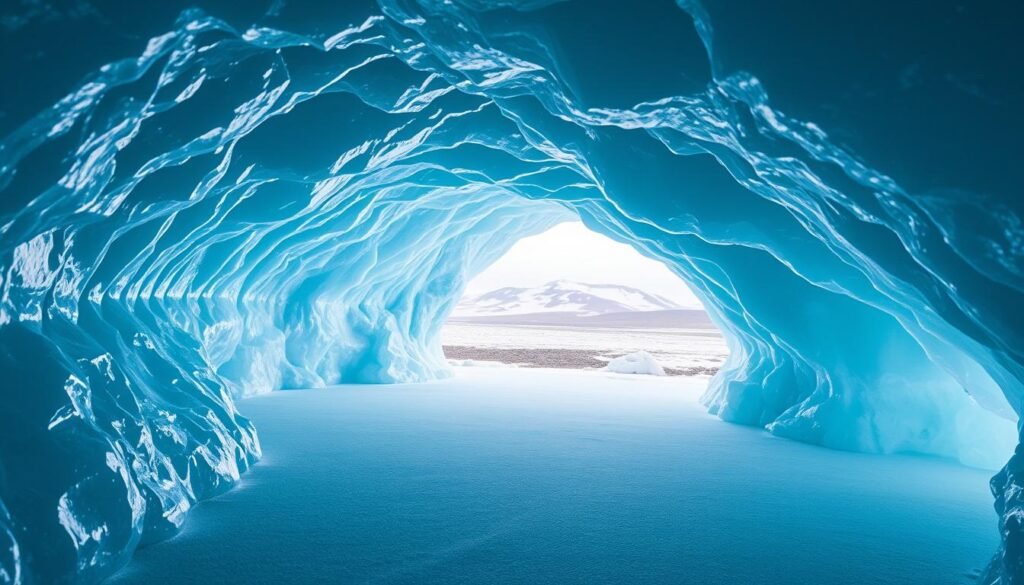
A visit here pairs sweeping glacier panoramas with tight, otherworldly ice formations. Vatnajökull covers roughly 15% of the country, and the park centers glacier access with clear safety rules and guide options.
Skaftafell trails and Svartifoss basalt columns
I hike in Skaftafell for broad glacier views, then follow the well-marked trail to Svartifoss. The basalt columns are striking and they inspired Hallgrímskirkja’s design.
Plan a half or full day here. I time Svartifoss early or late to avoid crowds and to catch softer light for photos.You can learn more about things-to-do-in-sedona
Katla Ice Cave vs. winter-only natural caves
I book guided ice cave tours during November–March when natural glacier caves glow deep blue. The Crystal Blue Ice Cave in Vatnajökull is a winter highlight and runs with strict guide-only access.
If my timing is off-season, I compare that winter-only cave with the Katla Ice Cave near Mýrdalsjökull, which can operate year-round. Guides supply helmets, crampons, and skilled route choice—don’t try this solo.
- I pair a Skaftafell hike with an ice experience and often add Jökulsárlón if time allows.
- Dress warm, bring gloves, and pack traction for shoulder seasons.
- Weather can close tours or trails, so I build flexibility into my trip plan.
“One of the best things I’ve done was standing inside a blue cave and then watching floating ice at Jokulsarlon at dusk.”
Glacier lagoons and Diamond Beach: floating ice and mirror-like light

I often plan my day so I arrive at the lagoon when the water is glass and the light is soft. Jökulsárlón sits along the South Coast about five hours from Reykjavik and it rewards slow visits.
I watch huge icebergs calve and drift toward the sea, then walk across the road at Diamond Beach where chunks of blue and white rest on black sand.
Boat tours run seasonally and give close-up views and a chance to see seals near floating bergs. I add one when schedules match and the weather feels calm.
- I often treat Jökulsárlón as a long day or an overnight; sunrise and sunset offer the best light and quiet hours.
- I walk both sides of Diamond Beach for varied angles and protect gear from spray and sand.
- Pair the lagoon with Skaftafell or continue east toward Höfn—splitting the South Coast across two days eases driving time.
“Savor the silence—this is one of the top places to simply stand and watch ice shift.”
Hot springs and spas: from wild pools to luxe rituals
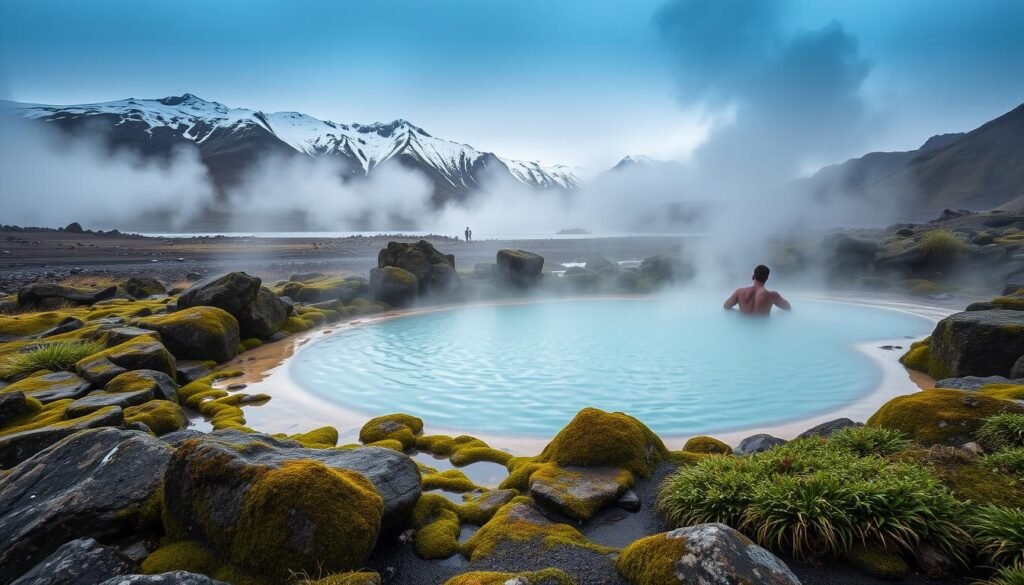
Bathing is part of the local rhythm here. I mix a polished spa with a wild pool on most trips so I can rest and reset between long drives and hikes.
Blue Lagoon tickets and timing
I book Blue Lagoon tickets ahead and often pair the stop with an arrival or departure transfer. The site sits between Keflavik Airport and Reykjavik and opens year-round, which makes it an easy, low-stress first or last hour.
Sky Lagoon’s ocean-edge ritual in Reykjavik
Sky Lagoon is roughly 10–15 minutes from the city center. I set a timed reservation and follow the multi-step ritual: hot, cold, steam, and scrub. For calm vibes I pick an early or late time visit.
Secret Lagoon on the Golden Circle for a quieter soak
The Secret Lagoon (Gamla Laugin) is a small, natural hot spring along the Golden Circle. It feels less polished and more old-school than Blue Lagoon, so I choose it when I want a quieter, affordable soak.
- I carry flip-flops, a quick-dry towel, and a water bottle; even short soaks dehydrate.
- I try a local city pool like Laugardalslaug to bathe like a resident (and yes, shower first).
- I blend one best luxe spa with a wild pool moment when safe—this balances the full range of bathing experiences.
“I treat hot spring time as a real experience, not a checklist.”
Volcanoes and lava fields: Reykjanes Peninsula and living geology
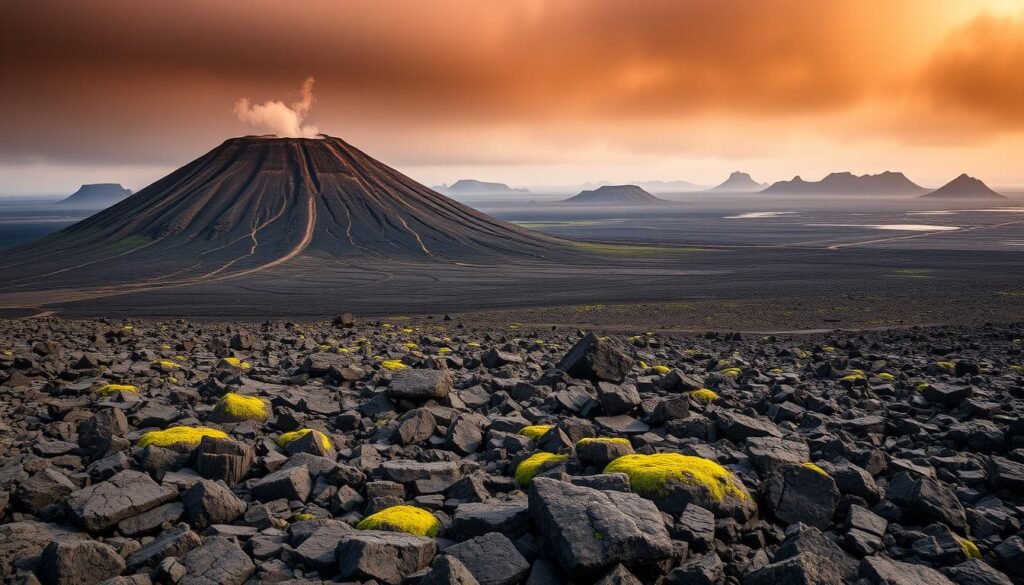
The Reykjanes Peninsula feels like a live geology lab, with steam vents, fresh lava, and windswept cliffs close to the airport. I often use a half-day here as a compact primer on how the country still reshapes itself.
Recent Sundhnúkagígar activity has changed access and trails, so I check current guidance before I go. When conditions shift, I pick guided visits—experts watch hazards and route changes closely.
Sundhnúkagígar crater area updates and safe ways to go
I build flexibility into my plan for road closures and weather. I park only in designated spots to protect fragile lava and moss, and I wear sturdy boots for uneven ground.
I add geothermal fields, black lava plains, and a lighthouse or two for a full loop. I bring a thermos and take a short sea-cliff walk for wide Atlantic views and, in winter, a quick check of northern lights forecasts—clear nights here can light up fast.
“Reykjanes works as a compact geology lesson and a memorable bookend for my trip.”
- I pair Reykjanes with Blue Lagoon for a relaxing last stop before a flight.
- I favor guided volcano tours when safety or access changes with time.
- I watch conditions closely and keep my schedule flexible for the best, safest visit.
Wild Westfjords and Eastfjords: road trip detours for serious views
I carve a slow route through the fjords when I want wide sea views and quiet roads. The Westfjords reward patient travelers with dramatic cliffs, puffin colonies, and near-empty pullouts.
I base myself around Ísafjörður as a practical hub. From there I head for winding roads, remote hot springs, and waterfalls that feel private in summer.
Bird cliffs, remote hot springs, and fjord towns
The Eastfjords offer a gentler pace: calm coastal places, hidden waterfalls, and small fishing villages with local charm. Egilsstaðir is the main town and links flights if my route needs a reset.
I’ll also find guided tours and kayak options if I want local insight or wildlife watching. I usually plan two or three days per region so driving and photo stops feel relaxed rather than rushed.
- Plan: summer access matters—many roads open only in warmer months.
- Tip: check fuel and road updates; remote stretches have limited services.
- Extras: add a guided hike or a kayak tour for wildlife and context.
| Region | Main hub | Best time | Highlight |
|---|---|---|---|
| Westfjords | Ísafjörður | Summer | Puffin cliffs, remote hot springs |
| Eastfjords | Egilsstaðir | Summer & shoulder seasons | Quiet fishing villages, waterfalls |
| Practical way | Base towns | 2–3 days per region | Slow driving, frequent photo stops |
“These regions reset my pace and remind me why slow travel rewards curiosity.”
Highlands in summer: colorful mountains and 4×4-only tracks
Mid-summer is when the Highlands open up and the rhyolite ridges burst with color under wide skies.
I pencil this area for midsummer when F-roads clear and trail networks show thermal valleys, black sands, and glacial rivers. Access is limited: you need a 4×4 or guided tours for safe river crossings and route finding.
I travel self-sufficiently here. I pack extra fuel, food, warm layers, and a paper map or offline GPS for areas with no signal. That way I manage long distances and scarce services.
- Choose your time for bluebird weather—colors pop and photos reward early starts.
- Find natural hot springs where allowed and respect signs; the landscape is fragile.
- Keep hikes short and flexible; even brief walks deliver huge views.
“I treat the Highlands as the country’s wild heart and leave no trace when I go.”
Go prepared, go early, and you’ll return to the Ring Road satisfied you touched a remote, raw interior—an adventure that stays with me.
Urban picks I love in the capital city: museums, shows, and local pools
The capital mixes science, spectacle, and soak-time in ways that work well between long drives. I plan short bursts here: a museum that feels hands-on, a live demo that explains geology, and a proper pool session that resets my legs.
Perlan’s ice cave and northern lights planetarium
I start at Perlan for an indoor ice cave kept around -10°C and a planetarium show that makes the aurora feel close. The observation deck gives sweeping city views that help me orient the next stops.
Whales of Iceland and the Lava Show
Whales of Iceland lays out life-size models so I book a whale-watching tour with context. The Lava Show offers a safe, live demo of molten rock—nothing beats seeing geology in motion for understanding the island’s power.
Local hot spring pools like Laugardalslaug
For a daily reset I rotate between steam rooms, hot pots, and a quick cold rinse at Laugardalslaug. I always shower first as required, then relax with a snack from Brauð & Co. or Café Loki.
Practical note: I swing into the harpa concert hall to admire the glass and check for last-minute harpa concert tickets. When I want a design-forward soak near town, I add sky lagoon to the plan. I’ll also find small museums and casual places that fit between bigger outings.
When to go: winter northern lights vs. summer midnight sun
Choosing when I travel shapes the whole trip—each season here has a very different mood.
Winter pros: aurora, ice caves, and snowy landscapes
Winter runs roughly September–April and is the prime season for the northern lights. Guided hunts boost odds, and I bring a tripod for long-exposure shots.
Natural ice caves open mainly November–March and require guides for safety and access.
I accept short daylight hours and trade them for deep-blue caves, crisp snowscapes, and high aurora potential.
Summer pros: long hours, road trips, and Highlands access
Summer brings the midnight sun and long daylight hours, perfect for slow drives and extended sightseeing.
Highlands and remote roads open in warm months, so I pick summer for 4×4 tracks and wide, late-evening light.
“Each season has its rewards—plan buffer days and pack layered gear so weather doesn’t spoil a key time visit.”
- I choose winter when I want to see northern lights and explore ice caves.
- I favor summer for long daylight and Highlands access.
- Book guided tours and popular tickets early; plan buffer days for weather.
- Bring warm waterproof layers year-round and a tripod for aurora nights.
How I plan tours, tickets, and day trips (’ll need this to make the most of time)
I map each day so travel time becomes part of the experience, not a scramble. I pick whether I’ll drive the Ring Road or join guided tours from Reykjavik early. That choice shapes where I spend nights and how flexible my hours feel.
Self-drive Ring Road vs. guided tours from Reykjavik
Self-drive gives me freedom on a long trip and lets me stop at small harbors and quiet viewpoints. I book cozy country hotels and build wiggle days for weather.
Guided tours are the low-stress way when I want commentary and expert gear. For glacier hikes or aurora hunts, tours save planning and deliver safety.
Booking popular tickets early: Blue Lagoon, Sky Lagoon, ice cave, whale tours
I always buy timed tickets for Blue Lagoon and Sky Lagoon before I fly. I reserve ice cave and whale-watching tickets too, especially in peak months.
Practical habits that help me: check opening hours, group day trips by direction, and save confirmations offline. I also find local updates for road conditions and closures so I can reshuffle if needed.
| Choice | Best for | Key action |
|---|---|---|
| Self-drive Ring Road | Flexibility, photography | Book hotels; pack snacks and charger |
| Guided day tours | Low-stress logistics, expert guides | Reserve tours early; confirm gear |
| Timed attractions | Blue Lagoon, Sky Lagoon, ice caves | Buy tickets in advance; arrive early |
Conclusion
I pick one big view each day, add a cultural stop, then rest in a hot spring, and that method makes the best things stick with me.
I promise that choosing one best highlight daily keeps travel calm and joyful. Mix coast, waterfalls, a city pause, and warm water for a natural rhythm that lasts.
Book Blue Lagoon, Sky Lagoon, ice cave, and whale tours ahead and leave space for the country’s surprises. Use Reykjavik as a base and save a day for a glacier or ice cave—those moments become stories you replay for years.
This full guide aims to help you plan with confidence, enjoy every hour, and return already plotting a next visit.


